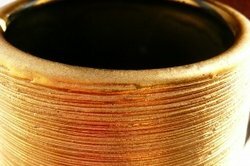Use a formula to calculate the radius of a cylinder
Cylindrical shapes are common in everyday life - for example in vessels or as a component in furniture and other objects. Do-it-yourselfers may therefore sometimes need to calculate the radius of a cylinder. How do you use the right formula for this?

Because the cylinder consists of two circular surfaces, which are also identical in size, you can calculate the radius of the body if you know the circumference of the circles.
How the cylinder is constructed
- A cylinder consists of two circles that complete the geometric shape at the top and bottom. These two surfaces are parallel to each other and are surrounded by a lateral surface.
- The name comes from the fact that this outer shell looks in the figurative sense as if it had been wrapped around the two circles. If you were to unwind this cover, then a rectangle would arise.
- The radius of the cylinder therefore also corresponds to that of the two identical circles. This indicates how far it is from the center of the circle to the outer shell. The double radius corresponds to the diameter of the cylinder.
- The diameter can therefore be determined using the formula r (radius) = 1/2 d (diameter). However, if the diameter is not known, you can use another formula.
Calculate the surface with the cylinder circumference - this is how it works
Not only in math lessons, but also with handicrafts it can be helpful from time to time ...
Determine the radius with a formula
- If you do not know the diameter of a cylinder, you can also calculate the radius based on the circumference. Because the outer surface wraps around the two circles, you can put a tape measure around the cylinder or, if you have unrolled the outer surface, then measure the width of it.
- The circumference then corresponds to the following formula: U (circumference) = 2 * Pi * r (radius). Pi is a constant that can be rounded to 3.142.
- If you now rearrange the formula according to the radius, the result is r = U / (2 * Pi) or r = U / 6.284. For example, if the circumference of the cylinder is 10 cm, the result is 10 / 6.284, i.e. 1.59.
How helpful do you find this article?

